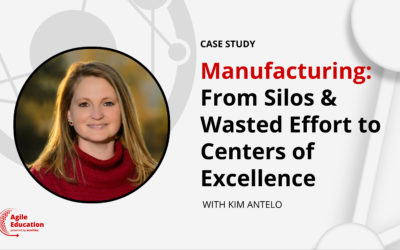Scrum@Scale Case Study
Minimal Viable Scaling with Scrum
Learn how Registered Scrum and Scrum@Scale Trainer Tom Wessel stepped in to assist a healthcare company with the implementation of its clinical trial management platform. When Phases 1 and 2 of this implementation had fallen far behind while using a traditional waterfall model, Tom guided them through the process of using the Scrum@Scale framework to increase speed, prioritize the right work to deliver a minimum viable product, and synchronize five teams working in different countries and across different time zones. With Tom’s assistance, goals were met and phase three was an unprecedented success.
CASE STUDY SNAPSHOT
Trainer Name: Tom Wessel
Organization: NDA
Organization Size: Large
Industry: Software Development
Topic: Cross-Team Coordination, Minimal Viable Product, Prioritization
Date: 2020
Website: Tom’s LinkedIn
Scrum@Scale Case Study Summary
This large healthcare company was preparing Version 3.0 of their clinical trial management platform; a significant upgrade that involved stabilization of several modules acquired by a third-party, new features, and the incorporation of Salesforce’s Lightning UI. Planned as a five-phase release over 18 months, a traditional waterfall approach was causing them to fall behind. During the first two phases, there were delays, missed deadlines, half of the modules were deemed unstable, and quality was poor. Five teams across different countries and time zones were not working in cadence. Minimal viable scaling was needed. Tom was brought in to get the deployment back on track.
The Solution: Prioritization and Picking Up the Pace
Registered Scrum and Scrum@Scale trainer Tom Wessel was brought in at Phase 3 to accelerate delivery and quality within this 60-person department. Phases one and two had failed to yield results.
The first step was determining what the “must haves” for the 3.0 Minimum Viable Product (MVP) were. Tom helped the team revisit the vision for the 3.0 product to create alignment. To help realize the vision, Tom worked with leadership to prioritize and refine the high-level backlog and create a roadmap to forecast the release plan for a Minimal Viable Product (MVP) release in Phase 3 and subsequent Minimal Viable Increments (MVIs) in Phases 4 and 5.
The Program management team (i.e., the EAT) was put in place to remove impediments. Work was aligned and coordinated across the five globally distributed teams, with meetings scheduled so that all five teams could communicate in real time. Prioritization was key. Models were decomposed into smaller stories to prioritize them, and the definition of ready was solidified. Roles were clarified. The Chief Product Owner (CPO) was coached in the role of making the hard choices on priorities and sharing them with the teams.
This data-driven combination of prioritization, clarification, reduction of lag time, and cross-functional teamwork was incredibly successful with an increase in velocity, and a completion rate improvement of 300%!
Outcomes from Implementing Scrum@Scale
The results of their seven short weeks sprinting were astounding. Entirely new ideas, implemented with agility provided the company with value driven solutions to an unprecedented challenge.
- Business Requirement Completion increased 300% from Phase 1 and 2 to Phase 3
- 18 Business Requirements completed in Phase 1 and 2; 53 Business Requirements completed in Phase 3
- End-user feedback cycles went from quarterly to monthly
- Core team, stakeholders and customers now see the evolution of solutions on a regular basis via demos where they can provide feedback
- The Business Analysts have become Product Owners who can distill requirements into User Stories that drive innovation
- Executives have access to real-time insights on the progress of deliverables without interrupting development time
- Technical debt is being addressed and improving quality
- The Scrum of Scrums focuses well on the holistic view of the program, the interdependencies, coordination, and impediments that need to be addressed
- The team uses a checklist for deploying software allowing for consistent quality checks
- There are plans to hire another PO preferably in India, but this will not happen until Phase 5
An important outcome of this implementation was the framework for success to employ for future implementations. Geographic coordination, common metrics, a strong Executive Action Team (EAT), extended-release planning, prioritization and increased feedback frequency are the tools that led to success, and can be applied to future endeavors.
Who is Tom Wessel?
Registered Scrum and Scrum@Scale Trainer Tom Wessel has more than a decade of experience successfully helping companies become more Agile.
“Over the course of my career, I have had the opportunity to play a myriad of roles across various industries building complex software systems. What I have learned is that the people within any organization want to do their best. They just need leadership to give them direction, basic guardrails to operate within, unbridled support and get out of their way.
The pace of change in today’s world is unprecedented and will only continue to accelerate. In order for organizations to continue to thrive they must become adaptive systems that make change part of their DNA.
People will learn technology, processes, practices, and techniques. This stuff is hard. What’s harder is bringing disparate groups of people together within an organization to create high performing teams and high performing organizations that accelerate delivering great products and services to their customers. Helping organizations achieve this state is my passion.”



